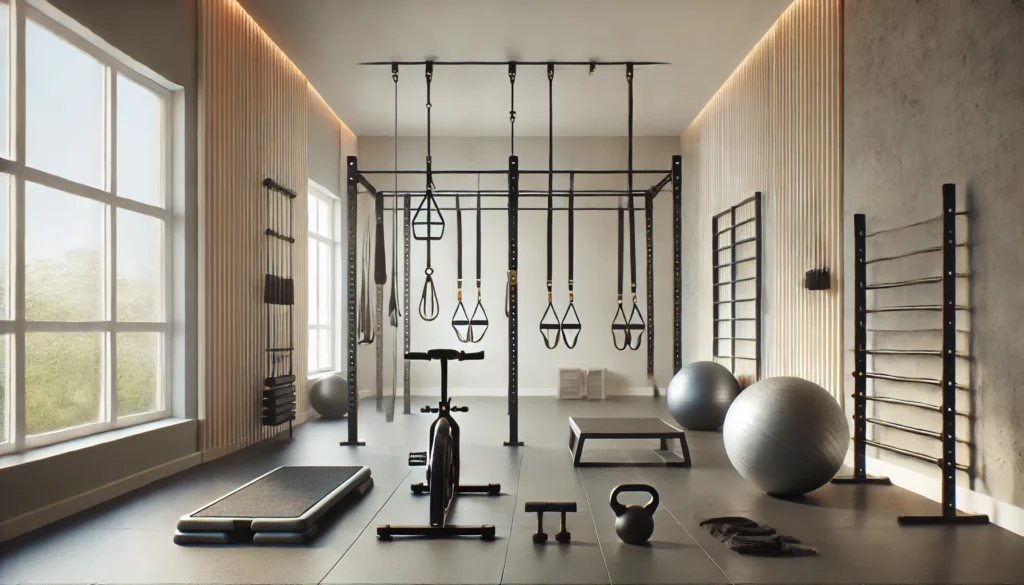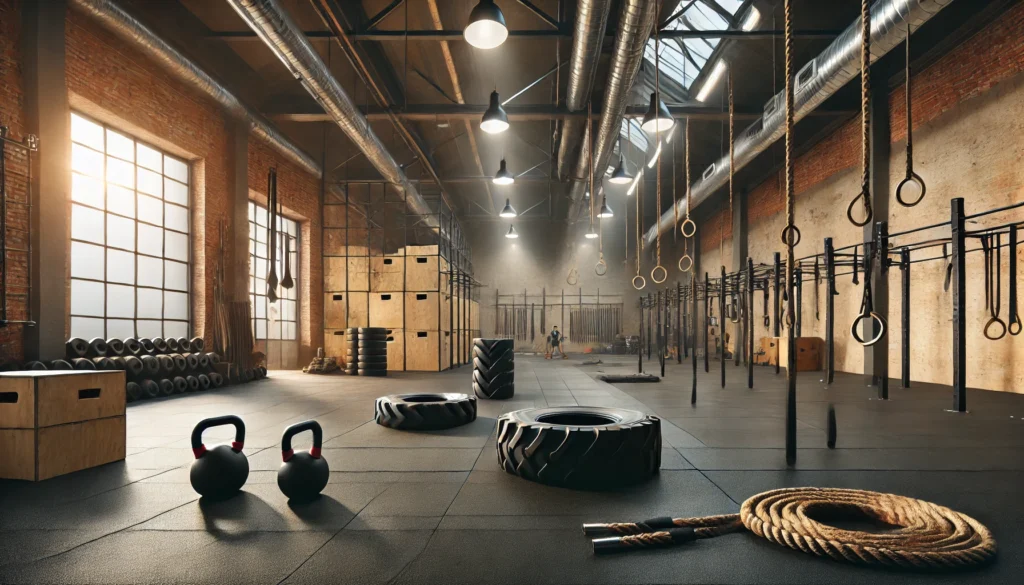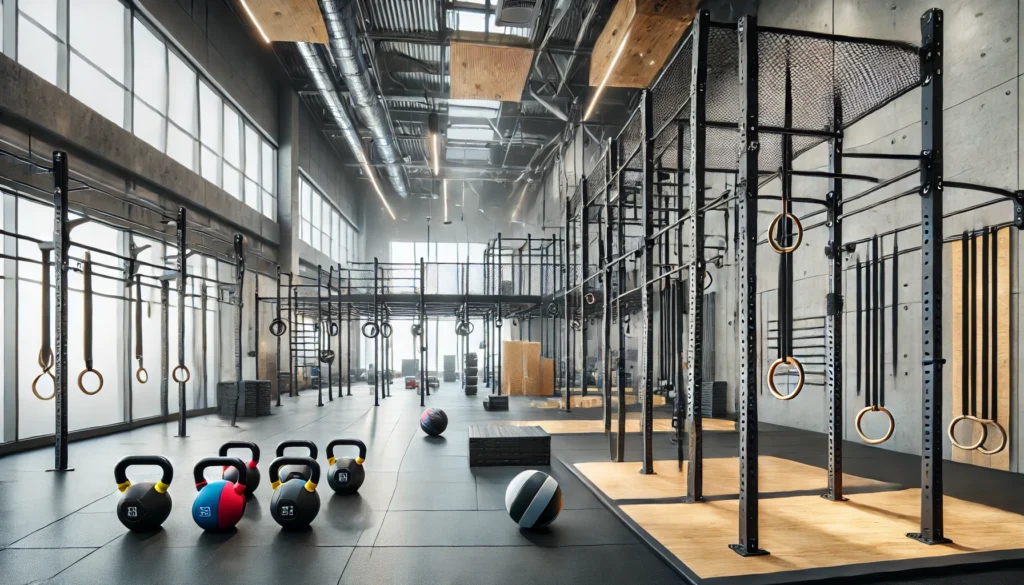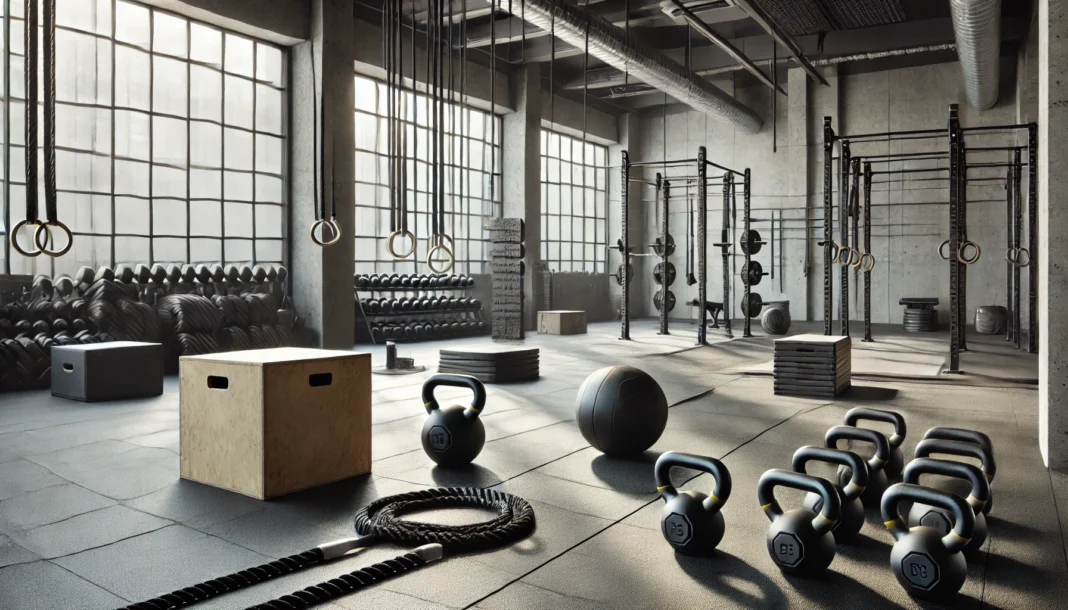The Importance of Functional Training for Women
Functional training has emerged as a powerful fitness approach that enhances strength, mobility, and endurance in ways that directly translate to everyday life. Unlike traditional weightlifting, which often isolates muscles, functional training for women emphasizes compound movements that engage multiple muscle groups simultaneously. This method improves coordination and stability while reducing the risk of injury. Whether carrying groceries, picking up children, or participating in sports, functional training enhances physical resilience and overall well-being.
One of the most significant benefits of functional workout for women is improved core stability. The core is the foundation of all movement, and strengthening it helps support posture, balance, and coordination. Functional exercises such as planks, deadlifts, and rotational movements engage deep stabilizing muscles, making everyday tasks easier and reducing strain on the lower back. Developing a strong core enhances spinal alignment and minimizes the risk of chronic pain or discomfort from prolonged sitting or poor posture.
Beyond strength, functional training is highly effective for enhancing mobility and flexibility. Many traditional exercise routines focus on isolated strength or endurance, neglecting the importance of joint mobility. Functional exercises incorporate dynamic movements that improve range of motion, ensuring that muscles and joints remain adaptable. Movements like lunges, hip hinges, and kettlebell swings promote flexibility while reinforcing proper movement patterns, reducing the risk of stiffness or joint-related issues.
Another crucial advantage of functional training for women is its ability to improve cardiovascular health while building strength. Many functional workouts incorporate high-intensity, full-body movements such as kettlebell circuits, battle ropes, and plyometrics. These exercises elevate the heart rate while engaging multiple muscle groups, providing both strength and cardiovascular benefits. This makes functional training a time-efficient workout strategy, allowing women to achieve optimal fitness in shorter sessions.
You May Also Like: Functional Strength Training: The Key to Mobility, Power, and Everyday Performance

Key Components of a Functional Workout for Women
A well-structured functional workout for women should incorporate elements of strength, stability, endurance, and flexibility. Unlike traditional resistance training, which often focuses on one muscle group at a time, functional training integrates compound movements that engage the entire body. This holistic approach maximizes efficiency while promoting balanced muscle development.
One of the foundational elements of functional training is bodyweight exercises. Movements such as squats, lunges, push-ups, and step-ups strengthen key muscle groups while reinforcing movement efficiency. Bodyweight training also enhances coordination and balance, making daily activities such as climbing stairs or bending to pick up objects easier and safer.
Incorporating resistance-based movements is essential for building strength and endurance. Free weights, kettlebells, and resistance bands allow for varied movement patterns that mimic real-life activities. Exercises such as deadlifts, kettlebell swings, and resistance band rows build upper and lower body strength while improving grip strength and overall stability. By progressively increasing resistance, women can enhance muscle tone and functional strength without excessive bulk.
Core-focused exercises play a crucial role in functional training for women by reinforcing stability and coordination. Engaging the core during exercises such as planks, Russian twists, and rotational lifts improves posture and movement efficiency. Core engagement also prevents excessive strain on the lower back, reducing the risk of injury during both workouts and daily activities.
Lastly, balance and agility drills are an essential component of functional training. Exercises like single-leg deadlifts, stability ball movements, and agility ladder drills improve neuromuscular control, coordination, and reflexes. Training balance and agility helps prevent falls and enhances athletic performance, making movement more fluid and controlled in both exercise and daily life.
The Benefits of Functional Training for Women’s Health
Functional training provides a wide range of health benefits, including enhanced bone density, metabolic efficiency, and injury prevention. As women age, maintaining strong bones becomes increasingly important to prevent osteoporosis. Weight-bearing exercises such as squats, lunges, and overhead presses stimulate bone growth and improve skeletal strength. Engaging in functional workouts helps protect against age-related bone loss, ensuring long-term mobility and independence.
Metabolically, functional training is an excellent tool for improving body composition and fat loss. Because functional movements engage multiple muscle groups at once, they require more energy expenditure than isolated exercises. This leads to increased calorie burn both during and after workouts, contributing to improved metabolism. High-intensity interval training (HIIT) elements, often included in functional workout for women, amplify this effect, making it an effective method for weight management and cardiovascular health.
Injury prevention is another critical advantage of functional training. Many injuries occur due to muscular imbalances, poor movement patterns, or lack of flexibility. Functional training corrects these issues by reinforcing proper biomechanics and strengthening stabilizing muscles. By training in multiple planes of motion and incorporating dynamic movements, women can improve their ability to perform everyday activities safely and efficiently.
Another significant benefit of functional training for women is the enhancement of mental well-being. Exercise has been shown to reduce stress, improve mood, and boost overall mental resilience. Functional workouts often incorporate varied and engaging movements, making them enjoyable and mentally stimulating. The combination of strength, endurance, and balance training helps release endorphins, leading to a greater sense of well-being and increased motivation to maintain a consistent fitness routine.

Building a Functional Training Routine for Women
Developing a personalized functional workout for women involves integrating exercises that align with individual fitness levels, goals, and movement patterns. A well-balanced routine includes a combination of strength, stability, mobility, and endurance exercises.
To begin, a warm-up consisting of dynamic stretching and mobility drills prepares the muscles and joints for movement. Exercises such as arm circles, hip openers, and cat-cow stretches improve circulation and range of motion, ensuring a safe transition into more intense movements.
Strength training should incorporate compound exercises that engage multiple muscle groups. Deadlifts, squats, lunges, and kettlebell swings develop total-body strength while reinforcing functional movement patterns. Integrating bodyweight exercises such as push-ups, dips, and planks enhances endurance while building foundational strength.
For cardiovascular conditioning, circuit-style workouts that combine strength and aerobic movements are highly effective. Kettlebell circuits, sled pushes, and battle rope exercises provide both strength-building and endurance-enhancing benefits. Alternating between strength and high-intensity cardio movements ensures optimal metabolic stimulation and overall fitness improvement.
Balance and flexibility training should be incorporated into each session to enhance stability and mobility. Exercises like single-leg balances, dynamic stretching, and foam rolling improve range of motion and reduce muscle stiffness. This promotes better movement quality and minimizes the risk of injuries over time.
Finally, cooling down with static stretching and deep breathing exercises supports muscle recovery and relaxation. Stretching movements such as hamstring stretches, shoulder rolls, and spinal twists help prevent post-exercise soreness while promoting flexibility and circulation.

Frequently Asked Questions (FAQ) on Functional Training for Women
1. How does functional training for women improve long-term financial well-being?
Engaging in functional training for women can have significant financial benefits by reducing long-term healthcare costs and minimizing the risk of medical interventions. Chronic conditions such as osteoporosis, arthritis, and cardiovascular disease can lead to expensive treatments, medications, and physical therapy sessions. By prioritizing functional fitness, women can strengthen bones, improve joint health, and enhance cardiovascular endurance, reducing the likelihood of costly medical bills. Additionally, staying fit and mobile through functional workout for women can prevent workplace injuries and enhance career longevity, particularly in physically demanding jobs. Over time, investing in fitness can contribute to a healthier lifestyle, minimizing the need for ongoing medical care and improving overall quality of life.
2. What role does functional training for women play in hormonal balance and metabolic health?
Functional training for women helps regulate hormones such as insulin, cortisol, and estrogen, all of which play crucial roles in metabolism and overall well-being. Strength-based functional workouts enhance insulin sensitivity, reducing the risk of type 2 diabetes and metabolic disorders. Additionally, moderate-intensity training lowers cortisol levels, which helps combat stress-related weight gain and fatigue. High-intensity elements in functional workout for women boost human growth hormone (HGH) production, aiding muscle repair, fat metabolism, and energy levels. Women experiencing hormonal fluctuations due to menopause or other life stages can particularly benefit from the stabilizing effects of functional exercise on endocrine function.
3. How does functional training for women contribute to injury prevention and rehabilitation?
Functional training for women focuses on movement patterns that mimic real-life activities, reducing the risk of injury by reinforcing proper biomechanics. Many injuries occur due to poor posture, weak stabilizing muscles, or repetitive movement patterns that place stress on joints and ligaments. By incorporating multi-joint exercises that improve strength, balance, and flexibility, functional workout for women helps correct muscular imbalances that can lead to common injuries such as knee pain, lower back strain, and shoulder impingements. Women recovering from injuries can use functional exercises as a rehabilitation tool by gradually rebuilding strength and stability without excessive impact. Personalized functional training programs can ensure a safe recovery while preventing future injuries.
4. How does functional workout for women improve cognitive function and mental resilience?
Studies suggest that functional training for women enhances cognitive function by stimulating brain activity and improving neural connections. Exercises that involve coordination, balance, and multi-tasking—such as single-leg deadlifts or agility drills—challenge the brain, improving reaction time, memory, and focus. Additionally, functional workouts boost the production of endorphins and serotonin, reducing anxiety, depression, and mental fatigue. Training in a group setting or engaging in interactive functional workout for women sessions can also provide social stimulation, further benefiting mental health. Regular participation in functional training has been linked to improved mood, reduced stress, and greater overall cognitive resilience, making it a powerful tool for maintaining mental well-being.
5. How can functional training for women enhance performance in outdoor activities and sports?
Functional training for women is highly effective for improving athletic performance in sports such as running, cycling, hiking, and swimming. Exercises like lunges, kettlebell swings, and resistance band movements build strength and endurance in ways that directly translate to outdoor activities. Functional workouts improve power, agility, and coordination, allowing women to perform at higher intensities with reduced fatigue. Core-strengthening movements, such as planks and rotational drills, enhance balance and stability, preventing falls and injuries during dynamic activities. Whether training for a marathon or simply enjoying recreational sports, incorporating functional workout for women enhances overall movement efficiency and physical resilience.
6. What are the best ways to incorporate functional training for women into a busy schedule?
One of the major advantages of functional workout for women is its efficiency, allowing individuals to achieve maximum results in minimal time. Women with demanding schedules can integrate short, high-intensity functional workouts into their day, focusing on compound exercises that engage multiple muscle groups at once. Circuit-style training, which alternates between strength, endurance, and flexibility exercises, ensures a full-body workout in 20-30 minutes. Bodyweight functional exercises—such as squats, push-ups, and lunges—can be performed at home or on the go, eliminating the need for gym access. Additionally, incorporating small movement habits, like standing on one leg while brushing teeth or using resistance bands while working at a desk, can enhance daily functional strength.
7. How does functional workout for women benefit pre- and postnatal fitness?
Functional training for women is particularly beneficial during pregnancy and postpartum recovery, as it strengthens the core, stabilizes the pelvis, and supports joint health. Functional movements, such as modified squats, glute bridges, and controlled rotational exercises, help maintain mobility and reduce lower back discomfort during pregnancy. Postnatal functional training focuses on rebuilding core strength, particularly the pelvic floor muscles, which can be weakened during childbirth. Low-impact, resistance-based exercises improve posture and muscle tone without excessive strain. Women recovering from pregnancy can benefit from functional workout for women programs that gradually restore strength while accommodating the body’s physical changes.
8. How does functional training for women improve bone density and prevent osteoporosis?
Functional training for women is an essential tool for preserving bone health and preventing osteoporosis, a condition that disproportionately affects women as they age. Weight-bearing exercises such as lunges, squats, and step-ups stimulate bone formation, increasing bone mineral density. Resistance training with dumbbells or kettlebells strengthens the skeletal system, reducing the risk of fractures. Additionally, balance-focused movements improve stability, lowering the likelihood of falls that could lead to serious injuries. Women who engage in functional workout for women consistently can maintain strong bones well into later life, ensuring continued independence and mobility.
9. What role does recovery play in functional workout for women, and how can it be optimized?
Recovery is a crucial element of functional training for women, as it ensures muscle repair, prevents overuse injuries, and supports long-term progress. Active recovery techniques, such as foam rolling, dynamic stretching, and mobility drills, help alleviate muscle soreness and improve flexibility. Incorporating proper nutrition, hydration, and sufficient sleep enhances muscle recovery and overall performance. Women should also schedule rest days or engage in low-impact activities such as yoga or walking to balance their training intensity. Structured recovery strategies ensure that functional workout for women remains sustainable and effective over time.
10. How can beginners start functional training for women without feeling overwhelmed?
Women new to functional training for women can begin with foundational exercises that focus on stability, movement patterns, and body awareness. Starting with simple bodyweight movements like squats, planks, and step-ups helps develop confidence and control. Gradually incorporating resistance, such as kettlebells or resistance bands, enhances strength without the risk of injury. Beginners should also prioritize mobility drills to ensure joints move efficiently before adding intensity to their routine. Seeking guidance from a qualified coach or following a structured functional workout for women program can provide a safe, effective introduction to functional fitness.
Conclusion: Elevate Strength and Stability with Functional Training
Functional training offers a powerful and effective approach to fitness for women, focusing on strength, stability, and everyday movement efficiency. By incorporating functional training for women into a consistent routine, individuals can enhance their ability to perform daily activities with ease, improve their metabolic health, and build resilience against injuries. Unlike traditional gym routines that isolate muscles, functional training promotes full-body integration, ensuring greater efficiency and coordination in movement.
A well-rounded functional workout for women includes strength-building, mobility-enhancing, and cardiovascular-boosting exercises that cater to various fitness levels. Whether through bodyweight training, resistance exercises, or high-intensity circuits, functional fitness supports overall well-being, confidence, and longevity.
By committing to a functional fitness regimen, women can build the strength and endurance necessary for a vibrant and active lifestyle. Functional training not only enhances physical capabilities but also fosters mental resilience, providing a holistic approach to health and well-being. Whether aiming for improved posture, increased strength, or enhanced movement efficiency, functional training empowers women to achieve their fitness goals while embracing a healthier, more dynamic lifestyle.
women’s strength training, everyday fitness, full-body conditioning, functional mobility, stability and core strength, metabolic conditioning, injury prevention workouts, strength endurance, fitness for longevity, high-intensity interval training, weight-bearing exercises, joint mobility improvement, functional movement patterns, dynamic balance exercises, postural alignment, neuromuscular coordination, active lifestyle support, wellness through fitness, energy-boosting workouts, holistic fitness approach

